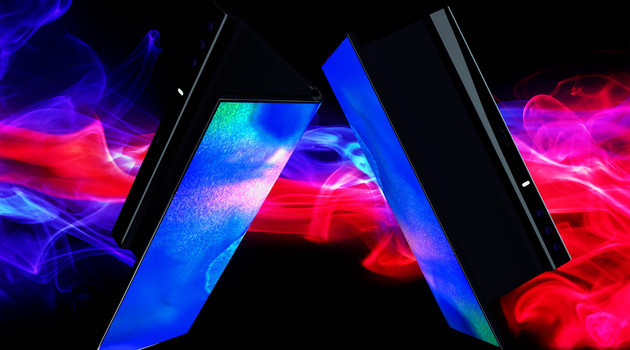Mar. 26 (NBD) -- Driven by the introduction of foldable devices and 5G smartphones, the global smartphone market, which suffered a big drop last year, is projected to pick up momentum in 2019 with year-over-year growth of 2.3 percent expected in the second half of the year, according to a report released by IDC in early March.
As the smartphone segment is increasingly saturated and space for differentiation is further narrowed, large smartphone manufacturers are deeming foldable devices as their new focus of development, Xie Yushan, assistant manager at Topology Research Institute under global market research firm TrendForce, said to the 21st Century Business Herald.

Photo/Shetuwang
In October 2018, California-based startup Royole Corporation introduced the world's first foldable phone. Following that, Samsung Electronics and China's Huawei, Xiaomi, OPPO and vivo all unveiled their foldable prototypes.
Samsung is set to bring its Galaxy Fold to the market in April 2019, and has two more foldable smartphones in the pipeline, seeking to get a head start in the emerging market segment. Huawei expects to launch its 5G-enabled foldable device, the Mate X, in the middle of this year.
Reports said more than 10 firms have already possessed or are applying for folding design patents. The growing folding trend is strongly pushed by the continuously declining smartphone sales around the globe.
According to research of Strategy Analytics, global smartphone shipments fell 6 percent year over year to 376 million units in the fourth quarter of last year. Sales volume for the whole year of 2018 slipped 5 percent, marking the industry's first ever full-year drop.
Though 5G developments and foldable screens are yet to have a reality check from users, 2019 will be surely marked as a year of modernization in the smartphone market, remarked Sangeetika Srivastava, senior research analyst with IDC.
Strategy Analytics predicted global foldable smartphone revenues would rise from zero in 2018 to 2 billion U.S. dollars in 2019, and foldable models will make up less than 1 percent of all smartphones shipped worldwide.
Undoubtedly, 5G and folding designs hold the prowess to drive a new round of technological innovation, but exorbitant prices and maturity of technologies are still obstacles that remain to be overcome.
Speaking at the Mobile World Congress in Barcelona last month, Yang Yuanqing, CEO of Lenovo Group, said foldable devices unveiled by many smartphone makers are merely paper talk and don't bring something new as compared to the Folio concept tablet showed off by Lenovo three years ago. Despite this, they carry a high price tag of more than 2,000 U.S. dollars, which is several times the price of tablets.
In terms of the manufacturing technique, no material could stay intact after being folded about tens of thousands of times, said Yin Jiayin, executive partner and president of Beijing Hyleen Investment Co., Ltd., adding that many would have obvious crease after folding.
When it comes to the real demand for foldable phones, Fang Jing, analyst with China Merchants Securities, once said such products will definitely have a market among business people, but for average people, the application scenarios are not clear and prices are too high.
Email: lansuying@nbd.com.cn


 川公网安备 51019002001991号
川公网安备 51019002001991号





